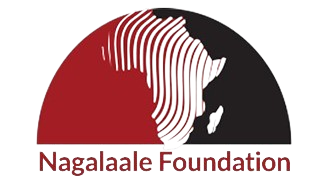— Our Community —
Discover Nagalaale Foundation's roots in Kakukulu village, Kayini Parish, Mukono District.
- Home
- Our Community
About Kayini Parish
Nagalaale Foundation is located in Kakukulu village, one of the nine villages in Kayini Parish, which is in Seeta-Namuganga Subcounty of Mukono District, in central Uganda
Kayini Parish is one of the five parishes in Seeta Namuganga subcounty in Nakifuma County, the others being Namuganga, Kitale, Kituula and Namanoga. In Uganda, a parish refers to an administrative subdivision within subcounties, the lowest local governments in a decentralized government structure, and are typically constituted by villages. Kayini parish has nine villages, namely: Kayini, Kayini II, Bwegiire, Kakukulu, Kikoma, Kimega, Kikondo, Lugujje and Nakyeeke.
Kayini Parish lies in Mukono district, which is situated in Kyaggwe County, one of the 18 counties of the traditional kingdom of Buganda. Buganda is the largest of the current tribal monarchies in Uganda, and has the largest grouping of Inter-lacustrine Bantu ethnic communities in the Great Lakes region and eastern Africa. Bantu peoples number approximately 85 million speakers of the more than 500 distinct languages of the Bantu, occupying almost the entire southern projection of the African continent, and are identified primarily linguistically, given the extreme diversity of their cultural patterns.
About Buganda Kingdom
Established in the late 14th century, Buganda is one of the numerous kingdoms that sprung up after the collapse of the vast medieval Chwezi Empire, growing so much over time in size, power and influence to become the power broker in the late 19th century, as the British established colonial rule in Uganda. Foreign influence in Buganda began with the incursion of the agents of Christianity and Islam from the 1820’s, before their influence escalated into politico-religious hostilities as the century ground on, culminating into Buganda becoming part of the British sphere of influence in 1894, and its status being formalized as a protectorate in the 1900 Buganda Agreement. Uganda was declared a British Protectorate in 1894, with Buganda and other kingdoms negotiating agreements with Britain to secure privileges and a level of autonomy. Buganda and her people subsequently played a major role in assisting the British administration in East Africa.
Following Uganda’s independence in 1962, the Buganda Kingdom was abolished along with other traditional monarchies by the country’s first Prime Minister Apollo Milton Obote in 1966, who in the process, declared Uganda a republic. After two subsequent decades of turbulence that included the five-year civil war that brought President Yoweri Tibuhaburwa Museveni to power in 1986, Buganda Kingdom was officially restored in 1993 as a cultural institution with its monarch, the Kabaka, having a largely ceremonial role. Buganda’s status as a constitutional cultural institution was formalized by the 1995 Constitution, which states that, “Subject to the provisions of this Constitution, the institution of traditional leader or cultural leader may exist in any area of Uganda in accordance with the culture, customs and traditions or wishes and aspirations of the people to whom it applies”.
Foundation Focus
The Foundation is focusing its charitable community investments on Kayini Parish and neighboring communities, as the nucleus of the Foundation’s charitable interventions. Under Uganda’s decentralized political administration structure, the parish is the lowest planning unit. Nagalaale Foundation seeks to fit in this setup, and to mirror and compliment the Government’s Parish Development Model (PDM), and interventions of other local government, non-government, faith-based and community-based actors and self-led initiatives of community groups. Over the strategic planning period 2023-2028 – resources allowing – the Foundation will be rolling out the transformational investment to other communities of Buganda Kingdom counties of Kyaggwe (Mukono and Buikwe districts), and Bugerere (Kayunga district)
